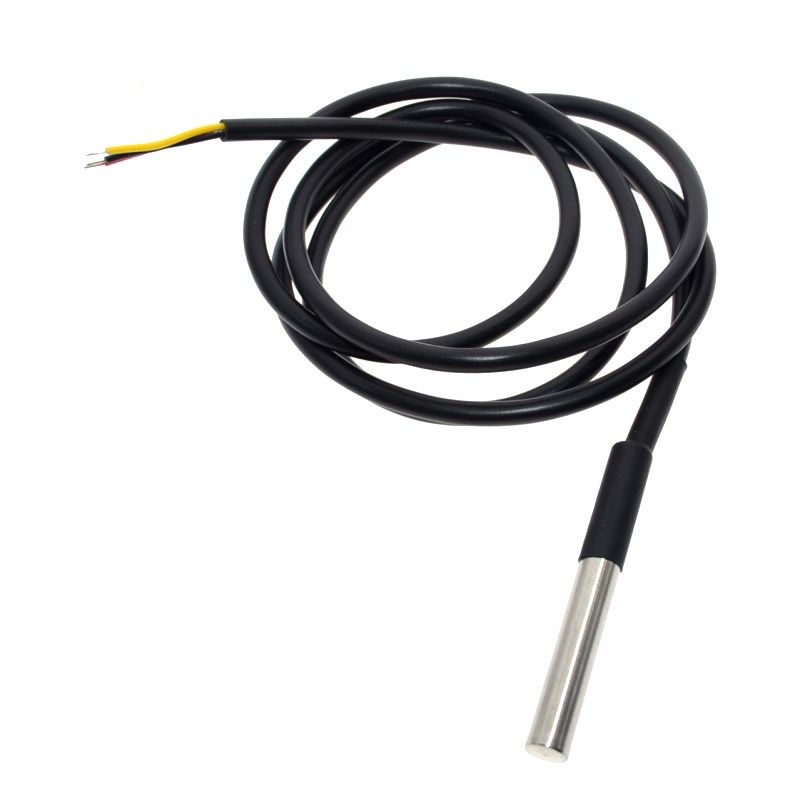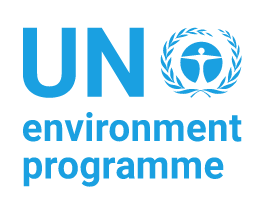New low cost DIY temperature loggers for reef monitoring
14 October 2020 10:31am
1 November 2020 2:55am
Oh, that looks like such an interesting project. I like that the cratering of hardware costs is enabling projects like this to happen. I have some comments on the build which are definitely not a criticism since I love seeing applications of technology that serve an actually useful purpose.
If the goal of the hardware is to measure temperature at a low price point, I would offer some suggestions on possible ways to bring the price down or improve the design while bringing down the cost:
- Instead of a preform PET tube, it might be an idea to use old PET drink bottles. The preform bottles would either need to be included with the design kit or be found easily by anyone wanting to test out the design. This would mean manufacturing your own tubes and caps which would be a pain. Instead, I would recommend using empty PET drink bottles. These could likely be hardened to be watertight to X meters and would both repurpose the plastic for something useful and remove the need to manufacture custom plastic. PET drink bottles are usually specified to withstand fairly high pressures due to holding carbonated drinks and are definitely waterproof. @htarold would actually be the expert on the feasibility of this approach.
- Re-design the board to integrate everything. [Note: I realize it might be difficult to do these changes, so if you're in contact with the people on this project, I'm okay to advise or contribute time to help implement them] In re-designing the board, you could create a form factor that fits into the above-mentioned PET bottles saving on those as a system cost. It's also possible to custom design the power supply to optimize the power and maintain stability. The board being used is designed to run at 5V, but you can actually run that microcontroller down to1.8V reducing the power by a factor of almost 10 (power consumption is proportional to voltage^2). It might also be worthwhile to consider using a precision voltage reference rather than the power supply as voltage reference. Even if you have a precision sensor, if your voltage reference isn't at least as precise, that would introduce uncertainty. I believe @htarold was referring to this in the above post. And finally you can integrate the sensor and all associated components onto a single board saving the cost and labor of the prototyping perfboard needed underneath the Nano.
- From the pictures in the paper, it looks like the sensor is located inside the plastic tube. If that's the case, what it's sensing is the air inside the tube, and the unspoken assumption is that the ocean temperature will reach equilibrium with the tube walls which will reach equilibrium with the air temperature so the sensor will reflect the ocean temperature. I think it's a valid assumption, but air, especially non-moving air, is a poor thermal conductor so it would take a long time to detect changes in ocean temperature. One possible idea would be to use a sensor that is actually directly inserted into the water. This would sample the actual ocean temperature in real time and would respond more quickly to any changes, ie: if the temperature changes at night vs day, etc. Thermistors can actually be purchased encased in stainless steel tubes. Or for a specialty precision thermistor like this, it's also possible to purchase a stainless steel temperature sensor tube housing and manually insert the sensor. An image of an encased thermistor is below.
- It might be possible to provide the components in kit form and lightly disguised as a soldering learning kit as well. That way, it's possible to have "soldering workshops" where people learn how to solder by assembling these kits. Attendees learn a new skill while protecting the environment, the orgs get temperature dataloggers, save the cost of assembly, and perhaps even make a bit of money for soda and chips if attendees pay to learn how to solder :)
If the Opuhala project wants, we can help procure components wholesale through our purchasers.
Anyways, it sounds like a great project, if they need any advice or help, we're happy to contribute to improve reef health.
Akiba, FreakLabs

2 November 2020 12:34am
Hi Akiba,
I made a mistake, I did manage to find some +/-0.05 degC thermistors for USD4 on Digikey, so the USD9 figure can be feasible in low quantitites. I actually bought a bunch of the thermistors you linked to; the part variation is quite high so calibration is needed to get good results. I think this is one area where we can truly say Cheap, Accurate, Simple: pick 2. Edward Mallon whom the authors also cite https://thecavepearlproject.org/ has blogged extensively on this.
Personally I would try to avoid analoque devices because I don't want to deal with having to amplify it, which is where the errors creep in. Maxim make an ADC that directly compares resistance ratios, and HX711 simplifies bridge measurements. I'm not sure how this logger does it; the Arduino's ADC isn't very good as you said. The MAX30205 human body temperature sensor may be worth looking in to for this application. The measurement range is small but probably adequate for this application, and the accuracy is well documented.
The sensor time constant is a bit high but should be ok for for this low-rate application, and kudos to the authors for characterising it. There are applications where the time constant needs to be <1s, like for ocean turbulence structure measurement, but that is more physical oceanography and only indirectly wildlife conservation. The internal sensor simplifies the logger and this is a big advantage in this instance, one I have taken advantage of in the past.
I have considered PET bottles in the past and it is very attractive. They do very well with internal pressure (7 bar I think!) but with external pressure they are prone to buckling. One approach may be to re-mould the bottle to be smaller so the walls are thicker. This should be easy because the bottle shrinks with the application of heat anyway.
I like cheap hardware too! Plus it goes well with citizen science in a field where investigation is labour intensive and it lends itself well to outreach efforts.
Camera trap repairs
5 August 2020 4:47pm
19 October 2020 5:53pm
Apologies for the super late reply and thank you for all your comments and help. WE had wifi problems at the research station. I managed to fix a few by removing the rust from connectors, leaving them in a sealed container with silica gel. I am not back at home so will look at the different documents and order some equipment before I go back out to be ready for more repairing. Is there a list of other suggested items I should invest in to help with repairs?
25 October 2020 11:28pm
That is great to hear, Mark. I'm interested as to which repair related to each of the symptoms you intially listed, but for now, knowing that more of your cameras work is excellent. I think your use of silica gel to properly dry out the cameras is underrated - this might have to top suggestion for malfunctioning cameras in the future.
A list of basic tools is a good idea. Maybe we should start a separate thread for this, but I'll throw a few in here to start.
Screwdriver set - small electronics screwdrivers, Phillips and flat head. Some cameras are using "torx" heads, so check your equipment and what you may need.
Multimeter - most problems can be checked using a volt meter only, but checking resistance of leads and continuity is very useful.
Pliers and snips - small needle nosed pliers are great for hard to reach pieces, side cutters help a lot for accurately trimming wires. If you start rewiring and soldering then wire strippers are very useful, but the job can be done carefully with a sharp knife if needed.
Soldering iron, solder and flux - if parts are coming loose, cables are getting torn off by animals or you just need to secure old wires better, then soldering is usually needed. A cheap soldering iron will do the job on wires for batteries and general hookup, but fine temperature control and a small tip is better for circuitboards. Do you have mains power - 240V/110V? A battery powered or 12V iron might be needed for a remote field/station. Fine electronics solder is most useful. Flux help clean surfaces for soldering but should be rinsed off to avoid corrosion - I have a "flux pen" that is small, portable. Practice is the key to soldering. There are lots of tutorials online about soldering but give it a go on something sacrificial first to get a feel for temperatures and how molten solder works.
Spare wire - size the wire accoring to the amperage that is needed. Passing too many amps through a fine wire may cause a fire (trust me). Multiple colours are avaialble so you can colour code your +/- and data lines.
Insulation - this should be higher up the list! Electrical tape wrapped around wires and terminals will get the job done, but heat shrink tube in various sizes is more robust (just remember to put it over the wire before you connect it). Kapton tape is good for covering flat, internal electronics like circuitboards.
I hope that helps. Any other suggestions?
Cheers, Al
1 November 2020 3:11am
I also just found this similar summary of equipment on youtube - https://youtu.be/pNBkfE8UPDI. The breadboard and components are a good addition for building and testing circuits.
Tree Canopy Tools workshop
29 October 2020 5:10pm
Upcoming AI for Conservation Events and Webinars
29 October 2020 10:57am
29 October 2020 11:02am
AI for Climate Forum: Lightning Talks
Bonnie Lei, Microsoft AI for Earth - 4pm GMT, October 30
Register here: https://us02web.zoom.us/webinar/register/WN_wO6ek5dTSMOmYqeMCDbkoQ
As part of the AI for Climate Forum 2020, we will host a series of Lighting Talks with industry leaders, academic representatives and researchers, NGO leaders, and policymakers; that will share ideas about the future of conservation and the harnessing of exponential technologies in the fight against climate change.
Next Guests:
October 30: Bonnie Lei, Head of Global Strategic Partnerships at AI for Earth/ Microsoft
November 6: Jenny Lawton, Startup Founder, and Innovation Expert

RSEC Journal: Ecoacoustics and Biodiversity Monitoring
 Remote Sensing in Ecology & Conservation
Remote Sensing in Ecology & Conservation
28 October 2020 12:00am
Tech Tutors 2: What do you want to see?
22 October 2020 4:08pm
22 October 2020 7:22pm
Hi There,
Nice you opened up the agenda.
I want to see more things on how to build devices, from cases to connectivity. I would like to see something in particular (a hands-on with real things and applications): Satellite connectivity.
Something was mentioned on the wildlife drones episode, I would like to see more on that, from ready to use devices to boards to build your own devices, detailed things, including estimated costs for the services, coverage and the like, an easy to roadmap to implement those things would be nice.
Of course, I want to see more on drones, that would be interestering too, there is a lot of action by applying drones for wildlife care. I am paricularly interested in autonomous ones, I don't know if there is any advance on them.
Some specialists on image sensors would be also appreciated (infrared, non-military SWIR, LWIR, etc)
Landbased Sensors + Connectivity + Drones + LWIR = Early wildfire detection, that is something that affects Jaguars and all kind of wildlife!
Best Regards,
Carlos.
26 October 2020 2:16pm
LoRa/LoRawan for dummies! aka conservationists who think everyone is talking about a woman named Laura.... haha :)
As Carlos mentioned above, this would tie in with "satellite connectivity" more broadly.
27 October 2020 3:48pm
Hi Carly,
This Nov-29 will be the international Jaguar day. I am working on a massive update on my site, the Jag things, Tech4Nature or Tech4Wildlife as you call it, new devices, etc. I promise I will keep you in mind the moment I write things about LoRa/LoRaWan. In fact, I already started because I couldn't forget your comments about Laura!!! I have many things going on but I will finish it, that's a promise (for you, but specially for the Cats!!!)
The first point in your favor: It is great that you call it LoRa/LoRaWan. Many experts don't make that distinction.
Leg band-style tags...but for mammals
16 October 2020 4:06am
26 October 2020 2:23pm
Hi Rob,
I can't think of any examples of this with primates, mostly because they'd probably figure out how to get them off or mess with them. Using collars at least limits the biting possibilities but still, they're dang smart! It would be hard I think to ruggedize it enough to deal with all that but then still have it be light-weight and non-bothersome enough to ethically use it (particularly with smaller mammals). Just some thoughts on the practicality aspect for primates; can't speak to other mammals but seems like this would be a similar issues for carnivore species.
-Carly
27 October 2020 2:01pm
Hello Rob,
I have seen the bracelet style used on large mammals with mixed success and failure. The main considerations are terrain the animal uses, and fitting the bracelet properly. Both affect the 1. durability of the tag and 2. whether it cuts into the skin. In the case of fitting to the leg, tighter is better to minimise rubbing and cutting in, but it will depend on the species you are thinking to tag. Would be great to hear how the development goes for small-medium size mammals.
Best,
Michelle
Snapshot USA Symposium for Student Research
 Roland Kays
Roland Kays
27 October 2020 12:00am
Civic tech fellowships: deadline 10/31
26 October 2020 8:44pm
Ways of developing skills and knowledge
15 April 2020 7:48pm
23 October 2020 5:00pm
Hey guys,
please count me in. I am software engineer and would love to get some well structured knowledge about conservation, environment, ecology, climate change, biodiversity loss and alike. I'll be more than happy to create learning group with you.
23 October 2020 7:26pm
Outstanding! I've created a Slack page: https://wildlabs-learners.slack.com/. Please message me your e-mail address to be added. From there, we can discuss who wants to learn what and then create subchannels if needed.
23 October 2020 9:31pm
Hi everyone,
I've taken several courses from the Edx platform and a few from Nat Geo.
I highly recommend Edx courses. They cover material with enough detail that I've always learned something but never been overwhelmed. Many of them provide additional material for more in-depth reading.
I can't speak to any of the other platforms on the list, but I intend to check them out.
Looking for a collaborator with CNN/app development experience
22 October 2020 3:09pm
22 October 2020 8:14pm
Hi Sophia,
Just wondering what 'collaborate' means here - are you looking for a volunteer on the project or do you have budget to support the project?
Steph
23 October 2020 2:24pm
Hi Steph! It could be either - if there was anyone out there for whom this work would be a good fit for their current role, then that would be easy, but if they needed their time paying for then I have extra funds I can apply for, which I would feel fairly confident about.
Towards a more ethical Indian drone industry
15 October 2020 10:26am
23 October 2020 1:11pm
Hello Shashank, I found your post very interesting - congratulations on looking at the ethical side of this technology! One of the reasons that our organisation, WildTrack, focuses on non-invasive wildlife monitoring technology is to avoid the ethical problems associated with disturbing animal behaviour, physiology and ecology. We're also using drones, both fixed wing and multicopter for monitoring and developing AI recognition algorithms, and trying to work out the optimal protocols for collecting data without any disturbance. I'd be interested to talk more with you about what you see as the major ethical challenges.
Getting Started in the WILDLABS Community
22 October 2020 9:29pm
Call for Tech Tutors questions: remote sensing
22 October 2020 9:30am
Build Your Own Data Logger Virtual Course
19 October 2020 12:00am
Report: Helping Ensure Ethical Indian Drone Operations
 Shashank Srinivasan
Shashank Srinivasan
19 October 2020 12:00am
Tiny, Cheap, Modular Ant Sensor Development
3 August 2020 10:18pm
9 August 2020 11:30am
Hi Andrew,
I watched your vid and finally I've got a decent idea of what you're trying to do! Took a while but what can I say!
I absolutely agree that the machine vision techniques are overkill and that you're on to something here. It got me thinking about these red line lasers, which project a straight line onto a surface. These are used in place of chalk lines in construction sometimes. If you were to project a red laser line onto a tree branch, and focus an image of a length of that line onto a detector (LED), you could pick out the flicker in intensity as ants cross the line.
If you want to get fancy, you can use your optical mouse as the sensor, or a regular camera such as OV7660 for a couple of bucks. You'd bolt the laser to the camera such that no matter what surface you projected the line onto, the line would show up only as pixels on row 240 (say) of the image. Now it's a matter of watching the pixel values fluctuate. You can use the usual signal processing techniques to filter out the wrong frequencies. Use 2 laser lines on 1 camera and you can get ant travel direction too.
10 August 2020 3:37pm
here's an example of an early artistic prototype
https://youtu.be/W1TdSzt3ZbM
16 October 2020 4:05am
Amazing stuff Andrew! The dips in light idea made me think of exoplanet hunting straight away! Such a cool idea!!
Maps and GIS webinars and virtual events
29 April 2020 2:10pm
1 May 2020 7:10am
As if that wasn't enough, here's another webinar for you...
Women in GIS
To celebrate the release of the second volume of Women and GIS, Esri Press, in partnership with Esri’s Women’s Enablement & Career Advancement Network (WeCan), is excited to host a webinar focused on celebrating and highlighting the amazing women featured in the book. The recording of this webinar is now available here.
During this webinar, participants will:
• Hear directly from several women featured in Women and GIS Volume 2 about their work
• Learn how women are using GIS to making a difference in government, education, sustainable development, and more
The amazing presenters in this webinar include: Dr. Susan Wolfinbarger, Rhiannan Price, Verónica Nelly Vélez, and Dr. Catherine Nakalembe
To learn more about the women featured in the webinar, and many other amazing women in GIS, check out "Women and GIS, Volume 2: Stars of Spatial Science". This book is available for purchase today at most online retailers. Grab a copy here.
15 October 2020 11:20am
Webinar/training series: Remote Sensing for Mangroves in Support of the UN Sustainable Development Goals.
This training focuses on mapping and monitoring mangroves and how it relates to UN sustainable development indicator 6.6.1: Change in the extent of water-related ecosystems over time. Indicator 6.6.1 is used in determining progress toward meeting Sustainable Development Goal 6, which is to “Ensure availability and sustainable management of water and sanitation for all.
Three parts, weekly beginning 5th November 2020 (there are two sessions per day to cover different time zones).
(thanks for flagging @hattiebranson )
Opportunity: Ocean Solutions: NBS, coral reefs, aqaculture, MPA tech
15 October 2020 10:37am
[Webinar series] Wildlife Crime is Financial Crime: A collaborative approach in the fight against wildlife crime
15 October 2020 10:16am
Introducing the Key Conservation App
 Key Conservation
Key Conservation
14 October 2020 12:00am
Opportunity: Sustainable Development Goals Internship
 UN Environment Programme World Conservation Monitoring Centre
UN Environment Programme World Conservation Monitoring Centre
13 October 2020 12:00am
#Tech4Wildlife News: Airdropping Sensors from Moths
 University of Washington
University of Washington
13 October 2020 12:00am
Ocean Stewardship Fund
 Marine Stewardship Council
Marine Stewardship Council
12 October 2020 12:00am
Distinguishing Noise from Sounds - a question of recognition?
23 September 2020 4:39pm
26 September 2020 2:04pm
Thanks Nick,
In discussion here this issue of unknown classifications may be a widespread problem for supervised learning models? A colleague PhD candidate here is working on sound classification and mentioned the self same problem today. For example, "Cat", "Dog", "Everything else"? Is the "Everything else" state space (much) bigger than the two classifying state spaces?
One suggestion has been to take very small slices of "Squawk" of the flock of birds and use a distinct slice of frequencies from the spectrum thereof?
A problem remains however: how distinct is the combined squawk of a Quelea bird from other flocks of small birds?
Any advice on how to build specific classifiers would be most helpful?
Many thanks,
Andrew.
9 October 2020 12:14pm
It sounds like you are referring to what is often called the "Cocktail Party" problem. There has been quite a bit of research in this area, but it is a very hard problem. I would start with the general literature on this topic as there isn't much in the conservation space. Check the hearing aid literature....picking out someone talking in a crowd of voices and sounds. Humans are pretty amazing at this...machines not so much. You might consider following up on some recent research at MIT:
https://blogs.nvidia.com/blog/2018/08/28/music-youtube-cocktail-party-problem-ai-artificial-intelligence-deep-learning/
For what its worth, it's a fascinating problem and has a lot of conservation applications. As Nick mentioned, the biggest challenge is getting enough usable soundscapes.
9 October 2020 2:54pm
Hi cosmicspittle,
Many thanks for the pointer, I shall discusss it with our local tech disussion group here tomorrow morning. One of the guy's, the PhD candidate in tehrapy audio analysis, will be most ineterested as well. Our project is indeed becoming ever more interesting, like an onion, peeling away layers of complexity. The key difference using our DSP methodology is that the spctrum has few if any harmonic cycles to identify, being of a low deviation level at a thin range of dB acros sht ewhole specturm. Thus each frequeny is much like th elast, giving no pattern to cross-correlate. At this stage we do not think machine learning will give us much either without some way of getting a pattern to match somewhere? One suggestion has been to take a series of very thin slices of frequencies when we know the squeak occurs using audacity as our source range, but as I say, the y-xis dB for every frequncy deviates very little, hence it is just "squelch"?
I hope to gain something from the research you mention, many thanks.
All the best,
Andrew.
Marine Stewardship Council offering up to £50,000 for projects using electronic monitoring
9 October 2020 1:48pm
Tech Tutors: How do I train my first machine learning model?
18 June 2020 1:19pm
8 October 2020 9:45pm
Hi Wildlabbers,
Just popping in to share this very cool primer for beginners to embedded machine learning from our tutor Daniel Situnayake! If you're interested in learning more about the basics of TinyML, this is a great resource.
-Ellie
[ARCHIVED] Drones and the law webinar
5 October 2020 11:51am
8 October 2020 6:30pm
Very cool, thanks for sharing, Adrian! We'll put this up on Twitter as well.
SmartOceans 2020
 Smart Oceans
Smart Oceans
8 October 2020 12:00am
Webinar: Drones for Change
 Wikifactory
Wikifactory
7 October 2020 12:00am



















29 October 2020 1:59pm
hi Andy,
This looks very interesting! I've been working with (or at?) temperature loggers for a while, and the interchangeable thermistor idea here is the most promising where accuracy at low cost is concerned. It's important to note it is the accuracy of the thermistor that is 0.05 degC; the accuracy overall of the logger is going to be less. I've not been able to find more technical details such as part numbers or schematics, so it's hard to get a handle on that. Concerning cost, I do know however that similar thermistors run on the order of $10 in onesies, which makes me think the $9 BOM cost is attainable at qty 1k or 10k.
Thanks,
-harold